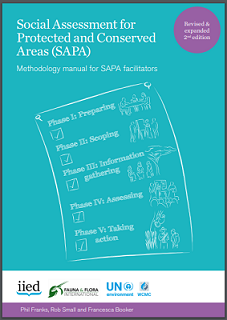
In April 2013, IIED in partnership with Fauna and Flora International (FFI) and the UN Environment World Conservation Monitoring Centre (UNEP-WCMC), launched a project to develop and pilot the Social Assessment for Protected Areas methodology (SAPA). It responded to i) concerns that some protected areas are imposing an overall negative impact on some local stakeholder groups, ii) the need to better understand, strengthen and promote the positive contribution of protected areas to local livelihoods, and iii) the need for a relatively simple, rapid, standardised and low-cost approach for assessing social impacts. Following the experience of piloting in five countries (Kenya, Uganda, Ethiopia, Gabon and Zambia) we published the first edition of this methodology manual for SAPA facilitators. This second edition has been fully revised to incorporate learning from further piloting, and to strengthen the elements of the methodology that focus on the governance and equity of protected areas and on taking action. For clarity, we have also changed the full name of the methodology to Social Assessment for Protected and Conserved Areas – but its name remains SAPA for short... The SAPA is a relatively simple and low-cost methodology for assessing the positive and negative impacts of a protected or conserved area (PA/CA) and related conservation and development activities on the wellbeing of communities living within and around the PA/CA.






